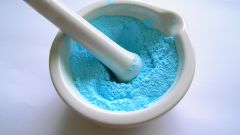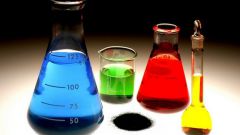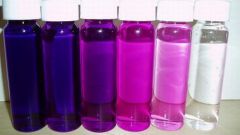Instruction
1
One of the most commonly used formula is: V = m/p, where V - volume, m - mass(g), p is the density(g/ml). Accordingly, if the these values, you can easily find the volume. Sometimes you aren't given the mass of the substance, but the amount of substance (n) and set out what the substance is. In this case, the mass is found by the formula: m = n*M, where n - amount of substance (mol) and M is molar mass(g/mol). It is best to consider the example task.
2
The amount of substance of a solution of sodium sulfate equal to 0.2 mol, and a density of 1.14 g/ml, find its volume.First, write the basic formula for finding volume: V = m/p. From this formula, the problem statement, we have only a density of 1.14 g/ml). Find the mass: m = n*M. the Amount of substance given, it is necessary to determine the molar mass. Molar mass is the relative molecular mass, which in turn is the sum of the relative atomic mass of simple substances into the complex. In fact, everything is simple: in the periodic table under each substance is indicated by its relative atomic mass. The formula of our substance Na2SO4, believe. M (Na2SO4) = 23*2+32+16*4=142 g/mol. Substitute into the formula, we get: m = n*M = 0,2*142 = 28,4 g. Now the obtained value substituted in the General formula: V = m/p = 28,4/1,14 = 24,9 ml. the Problem is solved.
3
There are also other types of tasks where there is a volume of a solution is the concentration of the solution. Formula required to find the volume of the solutionlooks like this: V = n/c, where V – volume of solution(l), n is the amount of solute(mol), c is the molar concentration of the substance(mol/l). If you need to find the amount of solute, it can be done according to the formula: n = m/M where n is the number of solute(mol), m is the mass(g) M – molar mass(g/mol).
Note
The units of these quantities must match each other. For example, if the mass is given in kilograms, the corresponding volume is measured in liters. And if the mass in g, volume in ml.
Useful advice
Always read the problem statement. Sometimes, because of wrong read conditions can not be solved even the easiest problem.









